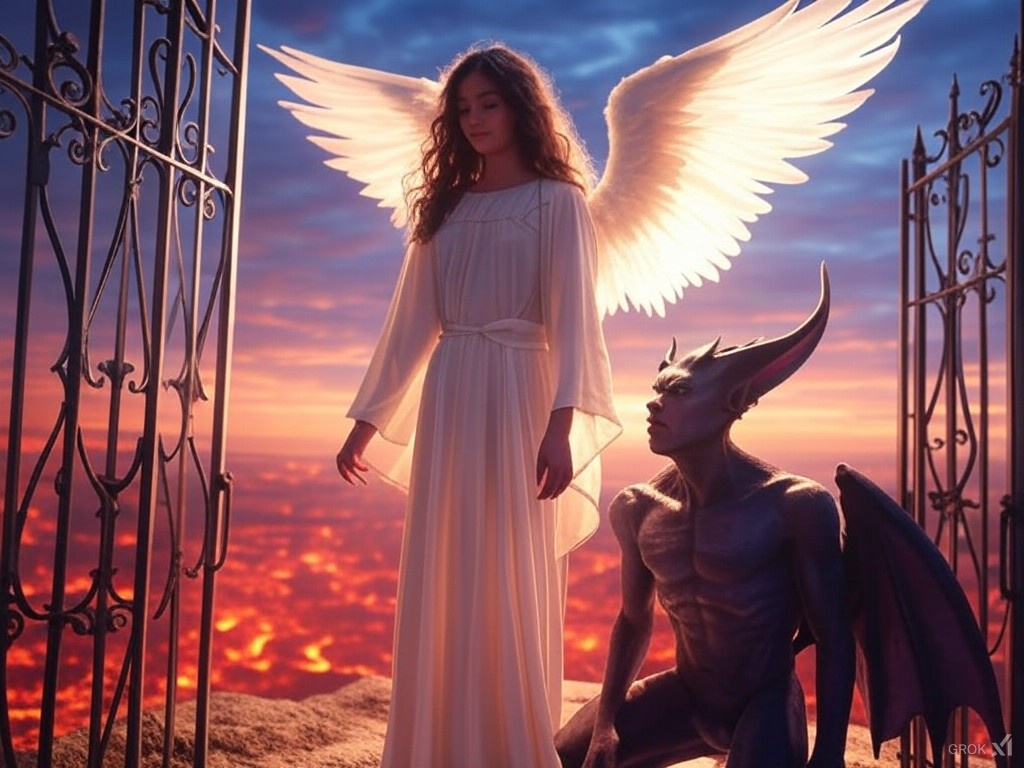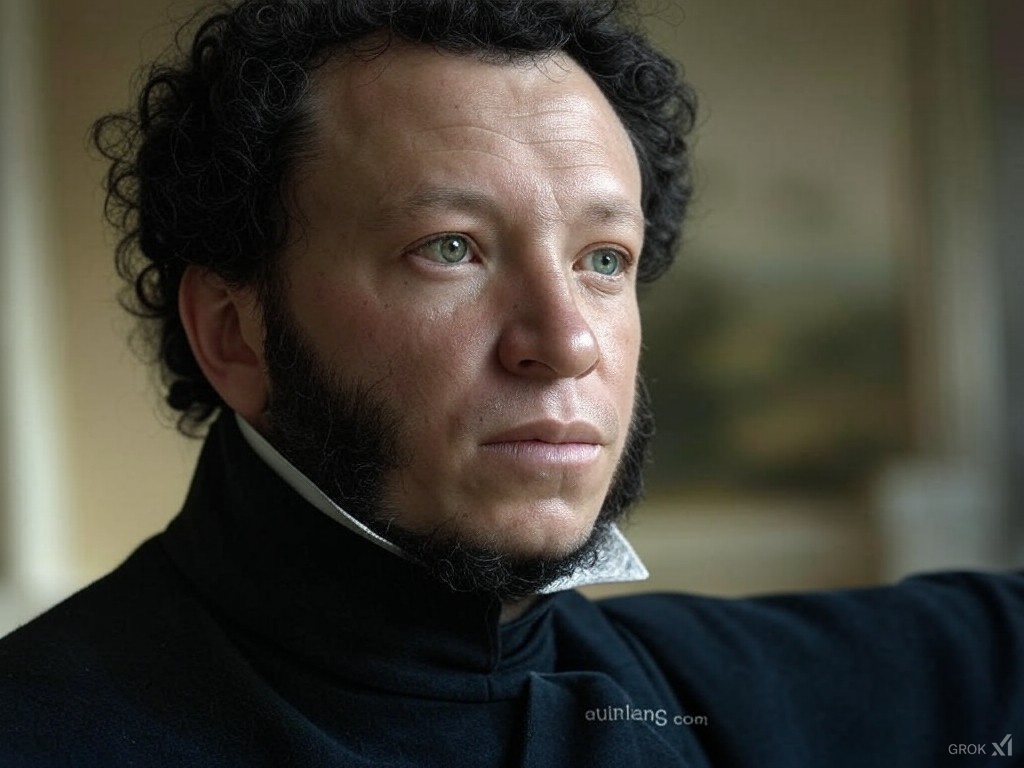Angel

Angel was written by Alexander Sergeyevich Pushkin in Russian originally in 1827.
Understand
This poem shows a contrast between a pure and luminous angel and a dark and rebellious demon.
The demon, accustomed to doubt and denial, observes the angel and for the first time feels an unknown emotion: admiration and the warmth of feeling.
In the end, he recognizes that not everything in heaven inspires hatred nor everything in the world provokes contempt.
It is a poem about the internal struggle between good and evil and the possibility of redemption through beauty and purity.
Text
Each sentence has all the information needed to fully understand it, with each color showing a specific aspect:
- Translation
- Sentence in English.
- Original Sentence
- Sentence in Russian.
- Words sequence
- Each word meaning and origin.
1/3
At the door of Eden, a gentle angel shone with drooping head, And a gloomy and rebellious demon flew over the hellish abyss.
в
In - adposition
Эдема
Edem - proper noun
эдем
ангел
Angel - noun
нежный
delicate - adjective
поникшею
drooping - noun
,
а
a - coordinating conjunction
демон
Demon - proper noun
-
мрачный
gloomy - adjective
и
and - coordinating conjunction
мятежный
rebellious - adjective
над
above - adposition
адской
.
2/3
The spirit of denial, the spirit of doubt looked at the pure spirit And the heat of involuntary tenderness For the first time dimly recognized.
Дух отрицанья, дух сомненья На духа чистого взирал И жар невольный умиленья Впервые смутно познавал.
3/3
“Forgive me,” he said, “I saw you, And it was not for nothing that you shone to me: I didn’t hate everything in the sky, I didn’t despise everything in the world.”

Alexander Sergeyevich Pushkin
Russia 1799 - Russia 1837
Russian author, known as Александр Сергеевич Пушкин
Themes and Interpretation
Duality of Good and Evil
The poem juxtaposes the tender, humble angel at the doorway of Eden with the rebellious, gloomy demon soaring above the abyss.
This contrast sets up an exploration of two opposing forces—light and darkness, purity and defiance—suggesting that these seemingly incompatible aspects coexist and interact within the universe.
Transformation and Redemption
Although the demon embodies negation and doubt, his unexpected reaction to the pure spirit—an involuntary spark of tenderness—reveals the possibility of inner change.
This stirring of emotion hints at redemption, implying that even those steeped in darkness have the potential to evolve and embrace beauty.
Inner Conflict and Awakening
The demon’s internal struggle, marked by a deep-seated disposition toward negation, is challenged by his encounter with genuine purity.
As he begins to recognize a tender, unfamiliar warmth, the poem underscores how confronting something truly good can awaken latent aspects of our nature, leading to a reevaluation of long-held beliefs.
The Power of Purity and Beauty
The angel’s soft radiance, despite his bowed head, symbolizes an unassuming yet profound force of goodness.
His light is not merely an external glow but a transformative presence that can penetrate even the most hardened heart, demonstrating that true beauty has the power to inspire change.
Reconsideration of Prejudices
In his confession that he did not hate everything in heaven or despise everything in the world, the demon reveals a crucial shift in perspective.
This admission suggests that rigid, all-encompassing judgments can be softened by the influence of pure, untainted goodness, encouraging a more nuanced understanding of the world.
Interplay Between Light and Darkness
By setting the scene at the thresholds of Eden and the abyss of hell, the poem emphasizes the interconnectedness of opposing forces.
This interplay implies that light and darkness are not isolated absolutes but part of a dynamic spectrum, where the encounter between them can lead to unexpected transformation.